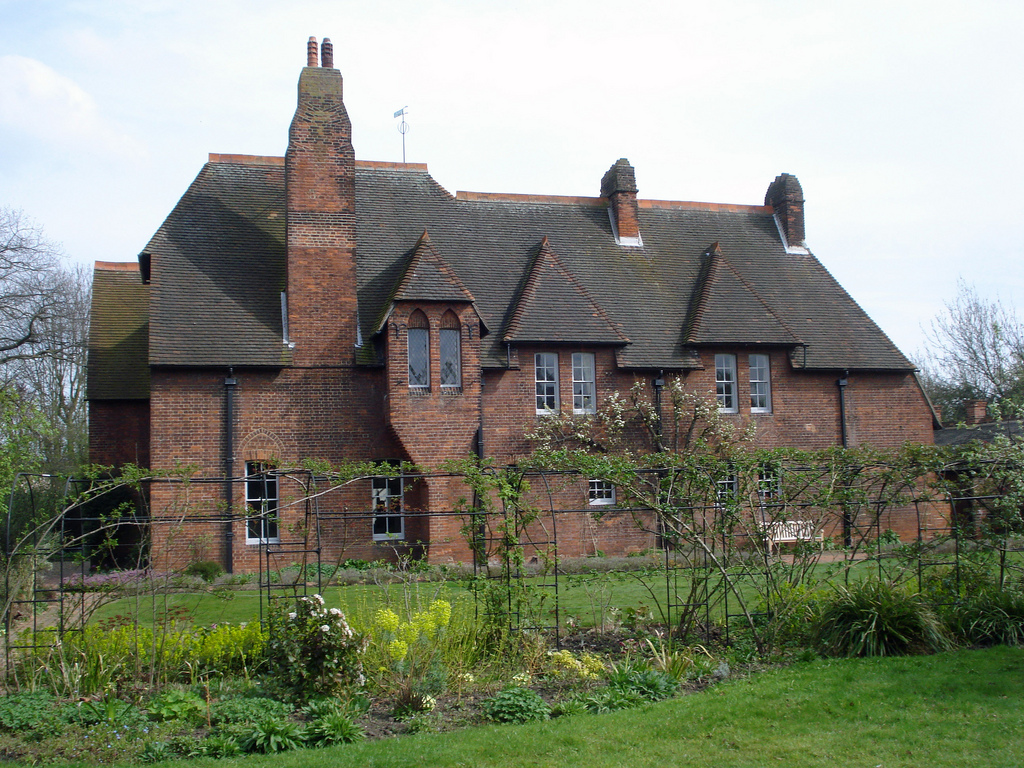
William Morris Red House and Early Tiles Catlaog
William Morris De Morgan Arts & Crafts Pre-Raphaelite Victorian Medieval
Catalog Articles Blue & White Textile Designs Site Map Search Contact

William Morris De Morgan Arts & Crafts Pre-Raphaelite Victorian Medieval
Catalog Articles Blue & White Textile Designs Site Map Search Contact


Not all tiles and colors of every pattern are shown here. Some tiles are shown on marble but are also available on ceramic. Follow the links to the product pages to see colors and variations. Later Morris, Marshall, Faulkner and Co. tiles, as well as Morris and Co. tiles, are listed under William De Morgan Tiles (De Morgan first produced stained glass and tiles for Morris and Co. but went to to create his own tileworks, selling tiles primarily through Morris & Co.
Morris designed Poppy as early as 1871. It is installed in the fireplace of his London home, Kelmscott House, named after his beloved Kelmscott Manor in the Cotwolds. Morris lived at Kelmscott House from October 1878 until his death in October 1896. Poppy is available on 4.25 and 6 inch tiles, and in other colors. .
Columbine is available on 4.25 and 6 inch tiles; it is also available in a blue and white version.
The Red House birds were designed by Philip Webb for Red House, William Morris's first married home. The birds are available as square accent tiles.
Philip Webb designed a stained glass window at Red House featuring the birds.
Red House Birds are available as border tiles, and as square accent tiles.
Also see: Red House Bird Tiles and Windows
Daisies are a recurring and important theme in William Morris's patterns, having much to do with Chaucer and as a symbol of respect for women (read more). Daisy tiles, wallpaper and many fabrics were inspired by an earlier embroidery done by Jane Morris to decorate Red House. The first daisies were designed by Morris after a pattern shown in Dance of the Wodehouses, a 15th century manuscripts.

Pilgrim's Rest Porch Tiles, 6 inch tumbled marble
The garden porch was called The Pilgrim's Rest because the location Morris chose for Red House was along the route the pilgrims in Chaucer's Canterbury Tales would have taken. Si Je Puis ("If I Can") appears on Red House windows designed by Philip Webb. Morris and Burne-Jones would rest on the porch bench and talk while watching the birds in the garden. More about Pilgrim's Rest
Morris's inspiration for bird and trellis was watching birds dart through the rose trellises that stood in the garden at Red House. I have Bird and Trellis in several colors. Bird and Trellis Border Tiles


Labors of the Months, March through June
The Labors of the Months tiles are based on tiles produced by Morris, Marshall, Faulkner and Co. (Morris & Co.'s predecessor) in the 1860s-1870s. They in turn were based on earlier tiles made for the Queens' College Overmantel at Cambridge.
More about: Labors of the Months

Briar Rose was Edward Burne-Jones signature myth, he revisited it in several paintings throughout his life. It appears early on in the Fairy Tale tiles designed for Morris, Marshall and Faulkner (the company that later became Morris and Co.). The Sleeping Beauty tiles consist of 9 two-tile panels, while the Beauty and the Beast and Cinderella series each have 6 horizontal panels, with two flanking panels.
The fairy tale tiles consist of three stories, and the surrounding swan tiles:

Ariadne and Phyllida, The Legend of Good Wimmen
Ariadne and Phyllida are from The Legend of Good Wimmen tiles, but were not part of the original set. In The Romaunt of the Rose, Chaucer makes many disparaging remarks. In the Prologue to The Legend of Good Wimmen, the God of Love appears to Chaucer in a dream dressed in the colors of the daisy take him to task for his irreverence. Good Wimmen is his redemption.
Then said Love, "It was a great negligence to write about the lack of steadfastness of women, since you know their goodness by experience and by old stories as well. Set aside the chaff, and write well of the corn. Why would you not write of Alceste, and leave Criseyde sleeping in peace? For your writing should be of Alceste, since you know that she is a model of goodness; for she taught noble love, and especially how a wife ought to live, and all the bounds that she should keep. Your little wit was sleeping that time. But now I charge you on your life that in your Legend you write of this woman, after you have written of other lesser ones. And now farewell, I charge you no more. (Geoffrey Chaucer, The Legend of Good Wimmen, Prologue)

The Labors of the Months tiles are based on tiles produced by Morris, Marshall, Faulkner and Co. (Morris & Co.'s predecessor) in the 1860s-1870s. They in turn were based on earlier tiles made for the Queens' College Overmantel at Cambridge.
